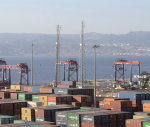You are here
When the Fed stops trying
Oct 03,2022 - Last updated at Oct 03,2022
BERKELEY — Soon after the 2020 presidential election, the incoming Biden administration set about mapping out its economic agenda. It took pains to avoid three mistakes.
First, it was committed not to fall into the same trap as president Barack Obama’s administration in 2009, when it failed to set clear priorities and look more than one move ahead. While Obama and his advisers had a plan for the first round of recovery measures following the 2008 financial crisis, they did not have a strategy for what to do when congressional Republicans and “blue-dog” (pro-austerity) Democrats mobilised against them. When that first round proved insufficient for delivering a robust recovery, the stage was set for a lost half-decade of tepid growth and widening income inequalities.
Second, the Biden administration’s policy planners were wary of providing too large a boost to spending. But they also knew that achieving a rapid and complete recovery would mean accepting some level of inflation. Because the post-pandemic economy would be configured differently than the economy that had preceded it, wages would have to rise in the newly expanding industries to attract the necessary supply of workers. Without clear price signals, workers would not have gone where they needed to go for the recovery to stay on track.
Similarly, it was inevitable that bottlenecks would emerge during an economic reopening, and prices of bottlenecked commodities duly rose. Again, such signals were necessary to show where the problems lay. Higher prices naturally create incentives for substitutions and other solutions.
Just how much inflation would there be? Nobody could say, but Biden’s team knew that if the reopening inflation shock was too large, it could easily trigger an overreaction from the US Federal Reserve. That, eventually, would put America back in a semi-depressed or depressed state of secular stagnation, with little policy traction to respond to the next crisis or to promote a recovery.
The third hazard to be avoided was that spending would rise by too much and the Fed’s reaction would be too restrained. In this scenario, inflationary expectations would become elevated or unanchored, and the economy would end up in 1970s-style stagflation.
The situation was thus analogous to Odysseus sailing between Scylla (a multi-headed monster) and Charybdis (a massive whirlpool). The Biden administration could either not try to navigate the strait at all (the first mistake), or it could try its luck with Scylla (secular stagnation) and Charybdis (stagflation).
Journeying safely to the other side seemed eminently achievable as recently as a year ago, when there was both the policy and the political will to set the oars to work to drive the boat forward at the right speed. There even seemed to be a wide middle path between secular stagnation and stagflation. While many argued over which danger was worse, both risks seemed relatively low, and thus manageable with a Fed that understood the situation and was not prone to panic.
Then came February 24, 2022, when Russian President Vladimir Putin ordered his invasion of Ukraine. The safe path appeared to narrow. By June, the Fed had abandoned its forward guidance and replaced an anticipated 50-basis-point interest-rate hike with a 75-point hike, citing an unreliable figure from the University of Michigan inflation-expectations survey to justify the move. At this point, the Fed no longer believed that it understood the situation.
Today, it is unclear whether there is still a safe path between Scylla and Charybdis. But following two more 75-bps hikes in July and September, I worry that the Fed has given up on even trying to find it. Instead, like Odysseus, it has intentionally started to hew towards Scylla (secular stagnation), viewing it as the lesser of two evils. One no longer hears Fed officials cautioning that last winter and spring’s tightening has yet to ramify fully throughout the economy. Instead, the Fed has signaled another 1.25-bps’ worth of hikes to come before the end of this year.
US Secretary of the Treasury and former Fed Chair Janet Yellen once told me that the Fed’s rate-setting Federal Open Market Committee will tend to overreact to the immediate news cycle unless it bases its thinking on some transparent formula like the Taylor Rule. But while the Taylor Rule made sense during the Great Moderation, the days of persistently low and stable inflation are gone, and the Fed has no replacement framework to elevate its thinking above the news-driven groupthink.
Not without reason, financial markets seem to be betting that the Fed is about to make mistake number two: pursuing policies that will likely drag the US back towards secular stagnation. If past is prologue, we eventually will return to a scenario in which monetary policy is stuck at the zero lower bound. The economy may suffer another lost half-decade of growth, and socially and politically destabilizing inequalities will become even more pronounced.
J. Bradford DeLong, a former deputy assistant US Treasury secretary, is professor of Economics at the University of California, Berkeley and a research associate at the National Bureau of Economic Research. Copyright: Project Syndicate, 2022. www.project-syndicate.org













